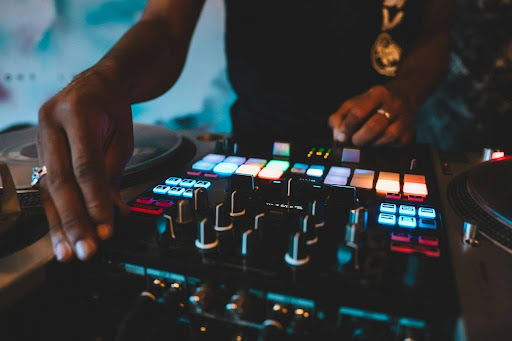How Afrobeats Became a Global Music Phenomenon

Few musical movements have reshaped the global soundscape as powerfully as Afrobeats. What began in West Africa has evolved into a worldwide sensation, influencing pop, hip-hop, R&B, and electronic music. Its vibrant rhythms, multilingual lyrics, and emotional storytelling have turned it into a universal form of expression that celebrates African creativity and identity.
The Origins of Afrobeats
Afrobeats originated from the blend of African rhythms, American funk, and Caribbean influences. Its roots go back to Fela Kuti’s Afrobeat, a politically conscious fusion of jazz, highlife, and Yoruba percussion that defined the 1970s. Fela’s fearless experimentation laid the foundation for a new generation of artists who combined traditional elements with modern sound engineering.
In the 2000s, Nigerian and Ghanaian artists reimagined these ideas using digital tools and global collaboration. D’banj, P-Square, and 2Baba brought rhythmic innovation and catchy hooks to the mainstream. These early innovators set the stage for the genre’s international rise through radio play and MTV Africa exposure.
It is evident that music now plays a crucial role in everyday life, and it becomes even more delightful to listen to it while driving. If you are considering buying a car and want to check its history, use a California VIN check, which helps confirm the vehicle’s background and safety record. Similarly, tracing the roots of Afrobeats gives a deeper appreciation for how authenticity and consistency built its global reach.
Early Influences That Shaped the Sound
Afrobeats drew from several African genres, including highlife, kwaito, and juju music. It merged traditional drum patterns with global pop sensibilities, creating something entirely new. Radio DJs and producers in Accra and Lagos began mixing these genres with hip-hop beats, establishing modern, hybrid identities:
- Fela Kuti’s Afrobeat laid the ideological foundation.
- Ghanaian highlife contributed melodic richness.
- Nigerian pop introduced storytelling and rhythm.
- Caribbean and American sounds added global flavor.
This hybridization gave birth to a genre both deeply African and globally accessible.
The Distinct Sound of Afrobeats

Afrobeats is characterized by layered percussion, steady basslines, and rhythmic repetition. Its lyrics, often sung in Pidgin English or native languages, express themes of love, ambition, and hope. The genre’s sonic versatility allows artists to merge traditional African soundscapes with elements of dancehall, trap, or house.
What Defines the Afrobeats Sound
The magic of Afrobeats lies in its rhythm and adaptability. Producers such as Don Jazzy, Sarz, and Kel-P refined a sound that is instantly recognizable yet constantly evolving:
- Syncopated drumbeats create hypnotic rhythm.
- Vocals blend melody and spoken word patterns.
- Songs often include call-and-response sequences.
- Beats emphasize groove, emotion, and repetition.
The lyrics resonate because they reflect real experiences, such as love, perseverance, celebration, and faith.Â
The Role of Producers and Collaboration
Production innovation has been vital to Afrobeats’ expansion. African producers collaborate with artists from the US, UK, and Caribbean to push creative limits. These cross-cultural partnerships generate new subgenres such as Afroswing, Afrotrap, and Afro-fusion, giving each artist room to express unique influences while staying rooted in African rhythm.
The Global Breakthrough
Afrobeats began gaining mainstream attention in the 2010s through groundbreaking collaborations. Wizkid’s “One Dance” with Drake topped global charts, Davido’s “Fall” became one of Africa’s most-streamed songs, and Burna Boy’s “Twice as Tall” won a Grammy. These achievements proved that African music could thrive globally without losing its identity.
Key Milestones in Afrobeats’ Rise
Streaming and social media turned Afrobeats into an unstoppable cultural force. TikTok challenges, YouTube choreography, and Spotify playlists gave African artists unprecedented visibility:
- 2016: Wizkid and Drake dominate charts with “One Dance”.
- 2017: Davido’s “If” and “Fall” gain global traction.
- 2019: Burna Boy performs at Coachella, representing Africa on a major stage.
- 2022: Tems features on global hits and movie soundtracks.
These moments built a bridge between African creators and global audiences, making Afrobeats one of the most recognized genres in contemporary music.
Cultural and Economic Expansion
Afrobeats has become a global lifestyle movement. Its rhythms influence fashion, film, dance, and branding. Global companies integrate African music into advertisements and collaborations, while festivals celebrate the continent’s creativity on international stages.
The genre is driving tourism, media coverage, and creative industries. Events like Afro Nation and Afrochella attract tens of thousands of visitors yearly, generating millions in economic value. African-inspired clothing lines and streetwear brands now dominate both African and Western markets.
These developments position Africa as a major contributor to global entertainment. Through Afrobeats, the world sees Africa as a source of innovation and joy, not limitation.
The Next Chapter for Afrobeats
The next era of Afrobeats is driven by digital innovation and education. Young musicians across Lagos, Accra, and Johannesburg are learning music production, branding, and streaming analytics. Record labels are investing in African divisions, while global artists seek authentic collaboration with African creatives. New subgenres such as Amapiano-Afrobeats fusion show that African music continues to evolve without losing its essence.Â





